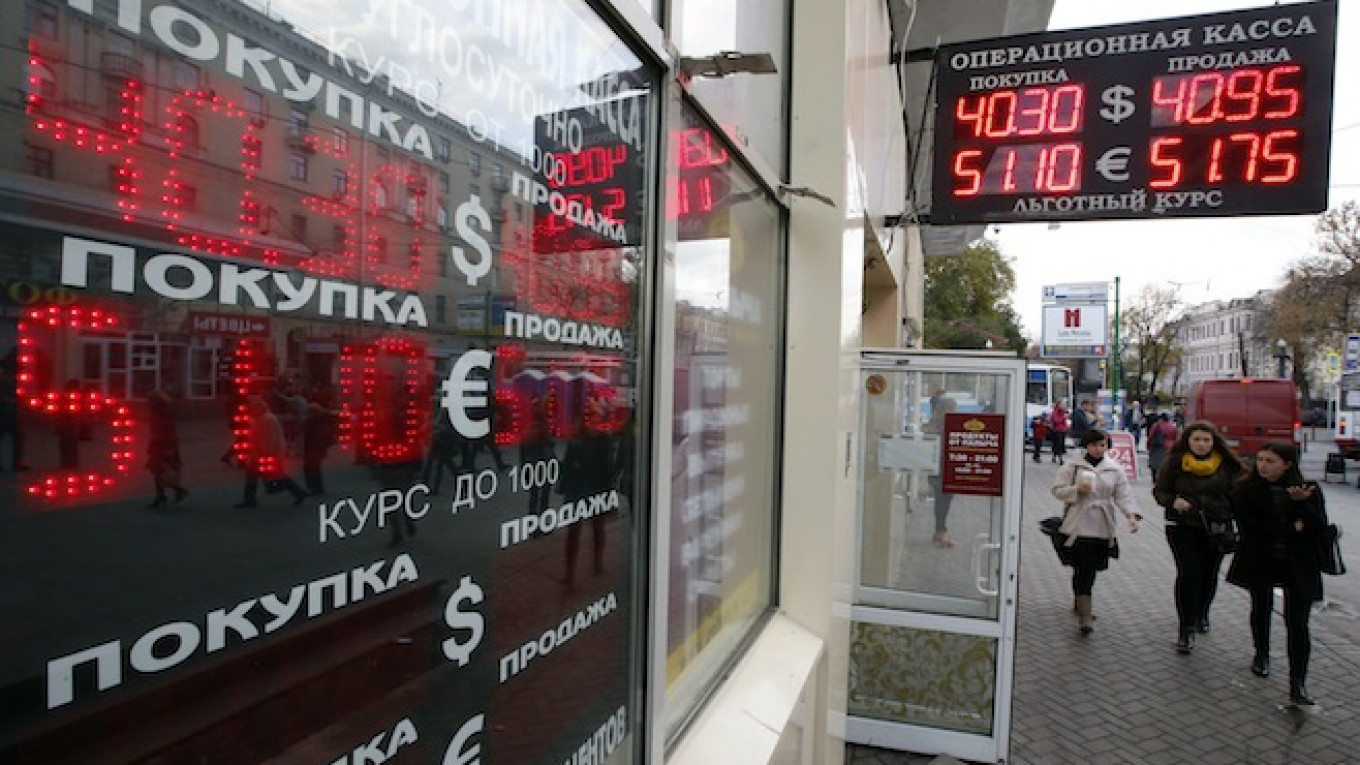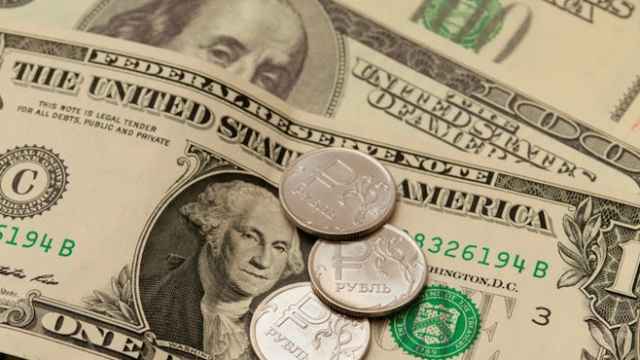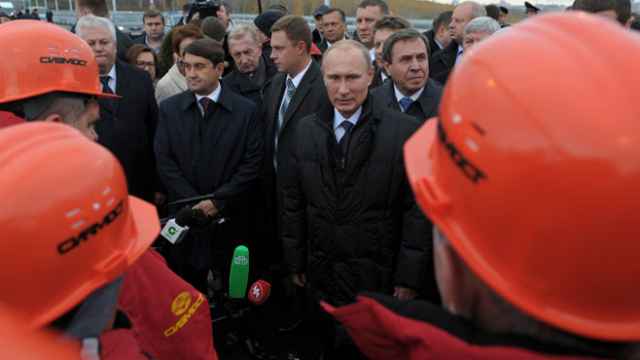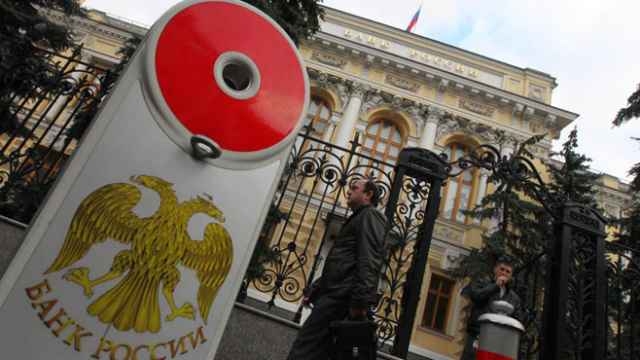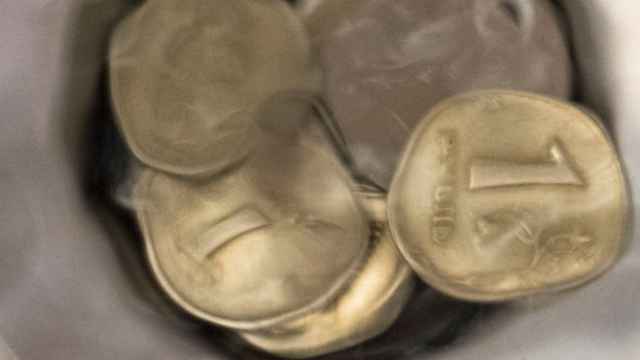The ruble fell Wednesday morning, sinking past the 41 to the U.S. dollar mark for the first time in recent history as the Central Bank stepped up its market interventions in defense of the currency.
The Russian currency, which dropped past the psychologically important 40 rubles to the dollar mark just a week ago, dipped below 41 dollars shortly after trading began in Moscow.
Tension over Ukraine and Western sanctions on Moscow have driven a slide in the ruble's value of more than 20 percent against the dollar this year, but the pressure has ramped up in recent weeks as the price of oil — Russia's key export and the backstop of its state finances — has fallen to 4-year lows.
"Weak oil is having a direct impact on the national currency, which could lead to fresh historical lows against the dollar," analysts at Promsvyazbank in Moscow said in a note Tuesday.
The ruble's downward trajectory has prompted the Central Bank to increase sales of its foreign currency reserves. The regulator said Wednesday it raised the upper limit of the currency's proscribed trading corridor by 35 kopeks Tuesday, indicating that it had burned through over $2 billion of reserves that day in an attempt to buoy the ruble.
The Central Bank automatically sells its foreign currency reserves on the market once the ruble overshoots its boundary, shifting the trading corridor by 5 kopeks every time it spends $350 million.
"Ruble weakening has become the dominant theme, with the Central Bank the lonely seller. Today is likely to be no exception," analysts at Sberbank CIB said in a research note Tuesday.
On Wednesday morning, the ruble was worth 45.89 against the ruble-dollar basket, the benchmark used by the Central Bank to measure the ruble's value. That this is already above the 45.7 upper limit of the trading corridor, implying that the Central Bank is spending hundreds of millions of dollars to buoy the currency.
Oil recorded its biggest one-day fall for three years Tuesday, compounding a slide of almost 30 percent since a mid-June high. Brent crude was trading just above $85 a barrel Wednesday.
Russian Finance Minister Anton Siluanov said Wednesday that Russia would begin foreign exchange deposit auctions within a month to reduce ruble volatility, according to Reuters.
The total amount available to the Finance Ministry for these auctions was likely to be $5.7 billion, according to Dmitry Polevoi, ING Bank's chief economist in Moscow.
"Given the scale of the market stress, the Finance MInistry deposits alone won't be able to cure the foreign exchange market, especially if the ruble continues falling further," Polevoi said in a note to investors Wednesday.
A Message from The Moscow Times:
Dear readers,
We are facing unprecedented challenges. Russia's Prosecutor General's Office has designated The Moscow Times as an "undesirable" organization, criminalizing our work and putting our staff at risk of prosecution. This follows our earlier unjust labeling as a "foreign agent."
These actions are direct attempts to silence independent journalism in Russia. The authorities claim our work "discredits the decisions of the Russian leadership." We see things differently: we strive to provide accurate, unbiased reporting on Russia.
We, the journalists of The Moscow Times, refuse to be silenced. But to continue our work, we need your help.
Your support, no matter how small, makes a world of difference. If you can, please support us monthly starting from just $2. It's quick to set up, and every contribution makes a significant impact.
By supporting The Moscow Times, you're defending open, independent journalism in the face of repression. Thank you for standing with us.
Remind me later.



